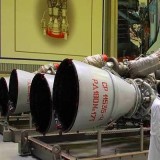How Starlab Space looks to Switzerland for the next generation of space stations

Space exploration is not usually among the topics that come to mind when thinking about Switzerland.
This Alpine nation is most often associated with its mountain landscapes, cheese and love for precision clockwork. However, in late 2024, Starlab Space, a Houston-based joint venture developing a next-generation space station, selected it as the location of its European hub.
Starlab got into a partnership with the Center for Space and Aviation Switzerland and Liechtenstein (CSA) to conduct part of its activities at Innovation Park Zurich. There it will conduct research and development activities related to the biotechnology, biomedicine and pharmacology aspects of the space station project. This joint venture will also establish a center for payload development in the Swiss city.
At the heart of this project is the goal of developing a commercial space station to succeed the International Space Station (ISS) as it approaches the end of its operational life in 2030.
New generation space stations will be slightly smaller than the ISS, but cheaper to build and operate, geared towards the conduction of industrial processes in space. In fact, its promoters expect costs to go down sufficiently for many space stations of this type to be built in the coming decades (hence the use of the plural).
Starlab Space is actually a joint venture formed by several major aerospace and technology companies. Led by Voyager, a US-based group that controls several space-focused businesses, Starlab Space has among its partners companies such as Airbus, Mitsubishi, MDA Space, Palantir and Northop Grumman. Interestingly, renowned hotel group Hilton is also participating in the venture, bringing in its know-how in the design of hospitality experiences.
AeroTime spoke with Prof. Oliver Ullrich, Chairman of the Center for Space and Aviation Switzerland and Liechtenstein (CSA), who is co-coordinating this project on the Swiss side, in order to learn more about the Swiss and European involvement in this ambitious space project.
Prof. Oliver Ullrich, Center for Space and Aviation Switzerland and Liechtenstein (CSA)“We have the universities, the qualified workforce and the commitment from the authorities that have decided to make of space one of the top sectors to develop within the 2050-time horizon,” explained Dr. Ullrich, while highlighting the special relevance of Swiss bioscience research, one of Switzerland’s key contributions to the project.
Bioscience is actually rather central to the commercial and industrial viability of the space stations Starlab Space is designing. In this regard, Ullrich pointed out that more than 60% of the research conducted to date in the ISS was biotech or medicine-related.
If the cost of launching and operating a space station drops sufficiently, it will become feasible to conduct a number of industrial processes in orbit. We are not talking about specific experiments here, but of serial production processes conducted at scale.
But why produce things in space?
Some specialized industrial processes can be done more efficiently in space, in great part because of the absence of gravity.
This is particularly true of some biotech applications with tangible applications on Earth, for example growing stem cells into human tissue or organs for medical applications.
In space, it is possible to grow cells in three dimensions and get them to assemble spontaneously in the desired way. If this is attempted on Earth, the cells are flattened by the gravitational force. It remains feasible, but it is necessary to put the cells on a kind of scaffolding, a rather complex and costly procedure.
The same can be said of other processes, such as some types of crystallizations, or even the development of specific substance mixes that may be used in personalized cancer therapies, for example.
“If transportation costs are low enough, many of these processes can be done more efficiently in space,” explained Ullrich, “but the output is likely to be time sensitive as well. This is the case, for example, if you are growing cells or creating chemical compounds which will be used to treat people back on Earth. So, we need a way to move things on a regular and timely basis between the station(s) and Earth, at least once per week.”
Ullrich described a possible scenario in which space stations are as ubiquitous as satellites, with a constant back-and-forth traffic between them and the ground. If our space stations become numerous enough, perhaps we may even see some specialization in the processes.
The ubiquity and growing popularity of low earth orbit (LEO) satellite constellations again provides a point of reference for what Starlab Space, which also plans to operate in a low earth orbit, is aiming for.
Since most of these cargoes are expected to be time-sensitive, this model also requires good logistics on the ground, so that any future outputs coming back from space can be swiftly channeled into the global supply chains. This is an area in which Switzerland is also well positioned.
In fact, the Starlab Space venture can even count on the use of an airport, Dübendorf, an air base near Zürich, which hosts the Swiss Air Force Air Operation Center (AOC) as well as many other military and civil aviation infrastructures and activities.
“Many of the value chains, infrastructure, processes and technologies that are needed for this venture are already established and available here, in Switzerland, but only at small scale. We just need to scale things up before starting industrial-scale orbital production.” said Ullrich.
Starlab Space is not alone in its intent to unleash the low-cost, commercial space station revolution.
Jeff Bezos’ Blue Origin is also working, together with private space firm Sierra Space, on a low-cost low Earth orbit (LEO) commercial space station concept called Orbital Reef, which is expected to become operational by 2027.
Another Houston-based private space firm, Axiom Space, is working on yet another similar LEO space station, which it also plans to put into orbit by 2027.
This time frame would place these two companies two years ahead of Starlab Space’s prospective 2029 launch. This situation prompted Ullrich to express his wish to see the project move forward fast, while at the same time reaffirming its conviction that within the next few years we are going to see significant advances in this field.
“Biotech will be the next industry revolution in space.” he stated confidently. The post How Starlab Space looks to Switzerland for the next generation of space stations appeared first on AeroTime.
Space exploration is not usually among the topics that come to mind when thinking about Switzerland. This…
The post How Starlab Space looks to Switzerland for the next generation of space stations appeared first on AeroTime.





